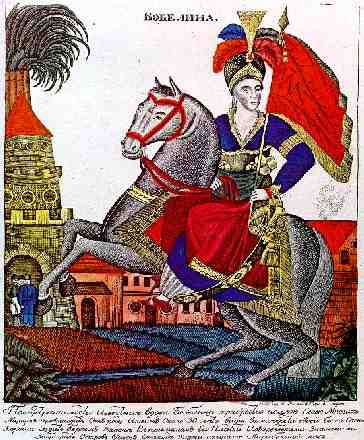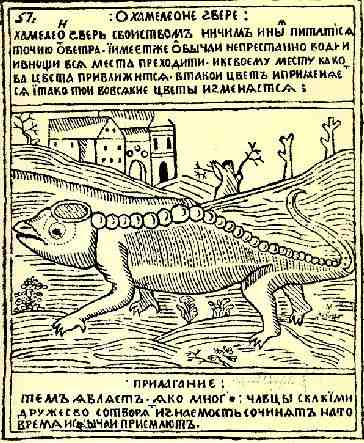
This category includes illustrations and reports of amusing, bizarre, strange, and fascinating things or events that took place around the world or in Russia. There are only a few woodcuts which belong in this category because they could not accommodate all the necessary explanatory text. Nevertheless, through the woodcut called About Chameleon the Beast, Russian readers were introduced to this exotic and amazing animal which could change colors, and in addition, they were taught a moral lesson that many people, like chameleons, change their customs and habits to please their acquaintances.

After the introduction of copper engraving, the number of such prints greatly increased. They played the role of one-page newspapers, posters, and advertising boards, providing visual and textual information about various unusual occurrences at home and abroad, even if this information, when printed, was already dated. Readers were particularly eager to learn about strange atmospheric phenomena, natural disasters, monsters, freaks, and unusual creatures. Good examples of such prints are An Apparition in the Sky Over Cartagena on 28th of December 1743, The Forest Monster and the Sea Monster Caught in Spain, The Satyr Caught in Spain, Bernard Gigli the Giant, and The Strong Beast Elephant from the Land of Persia, Brought to Moscow on August 13, 1796.
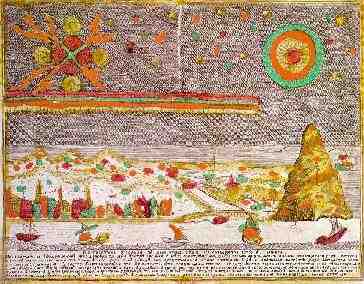
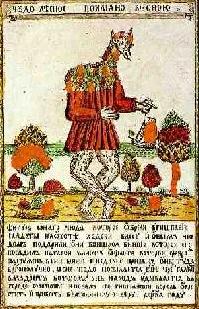
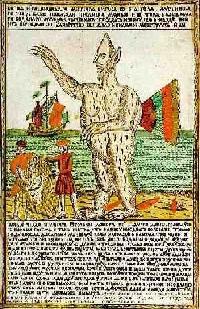
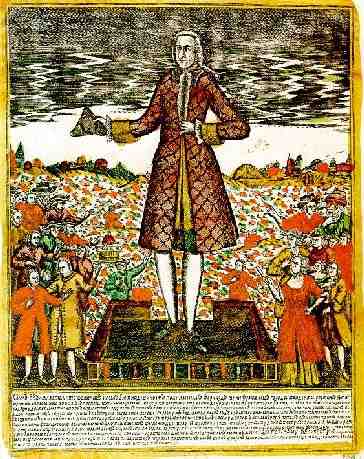
There were, of course, also less fantastic prints. The Eruption of Mt. Vesuvius in 1766 depicts the activity of Mt. Vesuvius between March and April 1766, as reported by the Moscow News on May 19 and 26. The fiery river of lava flows from the flaming mountain and huge boulders are propelled through the air while people watch the volcano from the neighboring hills. The Capture of Ochakov shows in considerable detail a map of Prince Potiomkin's siege of the fortress during the 1787-91 Russo-Turkish war and accompanies it with a long patriotic soldier's song. The Battle of Liebstadt illustrates an episode from the 1808-9 war with Sweden and, according to scholars, is based on a series of dispatches from the field. Napoleon's Arrival on St. Helena presents the defeated emperor stepping on the shores of the island but does not provide any text to explain the event.
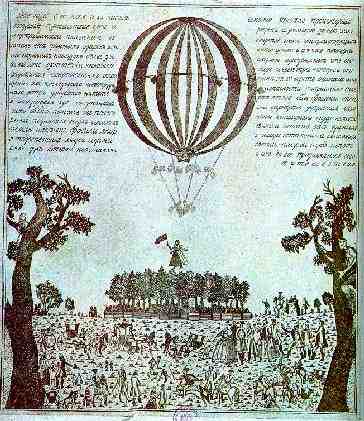
The Aerial Journey of Mme. Garnerin and a Russian Lady commemorates the first two balloon ascents in Russia on May 8 and 15, 1804, while The Railway celebrates the opening of the railway between St. Petersburg and Moscow in 1851. Closely related to the historical prints were the portraits of military leaders and heroic personalities. They are shown mounted on their brave steeds, pointing forward with their hands or sabers.
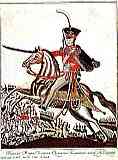
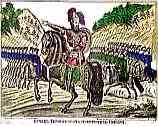
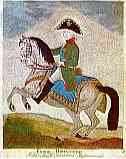
For example, Prince of Italy, Count Suvorov, Major-General Alexander Seslavin, Count Matvei Ivanovich Platov, and Yermak Timofeevich, Conqueror of Siberia, present the subjects in the traditional way, undoubtedly influenced by the representations of beloved literary characters (see below), but ultimately derived from icon painting, particularly from popular representations of the equestrian saints George and Dimitrii of Salonica. An interesting print of this kind, The Greek Woman Warrior Bobelina, undoubtedly inspired by the Russian involvement in the Greek struggle for independence, presents the heroic Bouboulina Laskarina (1776-1825), the defender of the island of Thassos.
